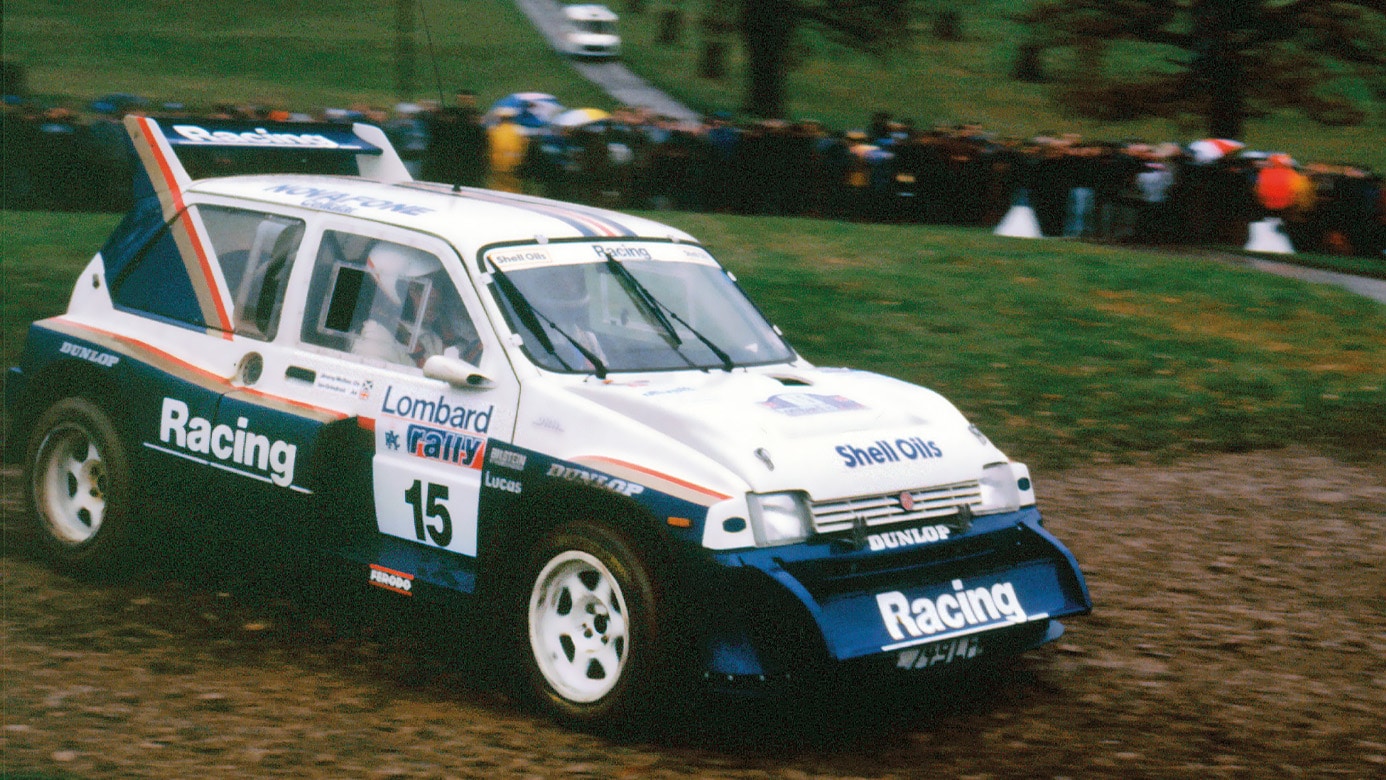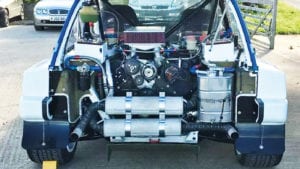MG Metro 6R4: race car buying guide
Of all the cars to take on the brawn of Group B, the Metro supermini was a preposterous proposition – yet it worked

More than a dozen 6R4s competed in the 1986 RAC Rally. Jimmy McRae here finished eighth, with the highest-placed sixth
There had never been a launch event like it, and there never will be again. Do something as extreme as the car itself. That was certainly achieved when a makeshift cinema full of journalists collectively gasped as a real-life 6R4 burst through the big screen showing a promo film, with driver Tony Pond just halting the car before landing in their laps.
This summed up the 6R4 perfectly. A car so wrong, it’s right. During the days of fire-breathing Group B monsters like the Audi Quattro, Ford RS200 and Lancia 037, a diminutive Metro had no place. Then the lunatics, led by Austin Rover’s motor sport head John Davenport, took over the asylum and delivered a mad idea to the board.
Group B rules were thriving, with multiple brands building cars to the new, power-hungry yet cost-effective formula, and Austin Rover wanted in.
The SD1 was long in the tooth by 1982, so Davenport decided to take the Metro as a base, purely because he believed it would suit tight rally stages. But it was a cheap runabout. Hardly the foundation for a rallying warrior.
At the time, Austin Rover was a sponsor of the Williams F1 team so took a donor chassis to the Grove workshops along with a large cheque. A development team led by Sir Patrick Head set to work, creating a bespoke tubular spaceframe chassis, clothed in glassfibre Metro bodywork that had been inflated with huge arch extensions, air intakes and (eventually) that monstrous front scoop splitter.
Williams considered fitting a Honda V6 engine, but to accommodate it at the front the driver would have to be sitting virtually in the rear seats. Williams flipped the plan, fitted a modified 3.5-litre Rover V8 with two cylinders cut off into the boot and entered it into a whole load of British rallies during a development season in 1984.
The Rover unit proved heavy, so Williams came up with a custom 3-litre V6 – codenamed V64V thanks to ex-Cosworth engineer David Wood’s unusual four-valve-per-cylinder V6 design. The 410bhp engine arrived – admittedly mounted backwards to centralise the weight of the gearbox – for 1985, as did the 200 examples needed for homologation. Tony Pond made immediate headlines by scoring a podium on its WRC debut in the 1985 RAC Rally.
For 1986 Austin Rover prepared to tackle European rounds of the WRC. Reliability issues and a lack of outright grunt against its turbocharged rivals limited results, and then came that tragic Tour de Corse during which the world lost Henri Toivonen and Sergio Cresta, and ultimately the future of Group B.
The car carried on with a reduced 300bhp output. Some even went to rallycross, with Will Gollop winning the European championship in a 650bhp bi-turbo 6R4 in 1992.
Due to its quirkiness, an original WRC-spec machine remains high on collectors’ lists.
One for sale
 1984 MG Metro 6R4
1984 MG Metro 6R4
Built around a new bodyshell and restored by Metro expert David Appleby; a prime example.
£350,000
ramsport.com
MG Metro 6R4 statistics
- Price new £45,000 (£16,000 Clubman)
- Price now £200,000-£400,000
- Engine 3-litre V6 twin-cam with four valves per cylinder
- Rivals Peugeot 205 T16, Audi Quattro, Lancia Delta S4
- Verdict A promising career cut short, but a historic technical showpiece
 1984 MG Metro 6R4
1984 MG Metro 6R4